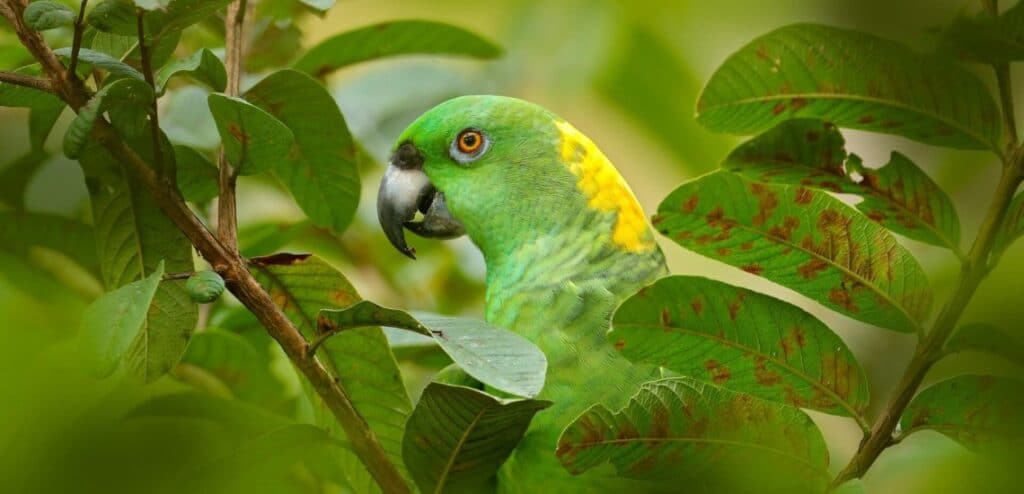Polly wants a future: Yellow-naped Amazon in illegal pet trade crisis

Chicks seized from the nest, birds dying in transit – the Yellow-naped Amazon’s wild population is being driven to the brink of extinction by the illegal pet trade. If we want to give this intelligent and resplendent parrot a future, we need to act now – before it’s too late.
By Shaun Hurrell
The global popularity of the Yellow-naped Amazon Amazona auropalliata as a pet is leading to its rapid demise. This shimmering green parrot is renowned for its vocal and mimicking abilities, meaning it can emulate human speech in captivity – where it can live for up to 60, or even 90 years in some cases. Websites offering pet advice describe the bird’s ‘outgoing personality’, ‘playfulness’ and ‘ability to bond with its owner’, and they can sell for thousands of dollars. Yet, of course, any caged birds today originated from the wild (either as chicks or descendants), where such traits evolved in social roosts of hundreds of individuals that used to gather in Central America and southern Mexico, flashing their yellow napes (back of the neck) and eating fruit and seeds in tropical forests and mangroves.
The species was ‘uplisted’ to Endangered in 2017 and more recent population surveys are showing a catastrophic crash in numbers, meaning the species could very soon be uplisted again to Critically Endangered. While the population in southern Guatemala numbered 30,000-50,000 individuals in the 1980s and 1990s, fewer than 500 individuals were found in the same area in 2019 – that’s a reduction of around 99% – and there are now an estimated 1,500-1,600 mature wild birds remaining worldwide.
Across the species’ range, the extreme declines are caused by unsustainable levels of poaching for the pet trade and ongoing habitat destruction. Nest raiding reportedly causes the failure of most, or even all, breeding attempts in many areas. This can also affect future breeding: damage of nest trees when extracting nestlings can leave the tree unusable.
In Latin America, hundreds of thousands of wild parrots are illegally caught and traded every year despite national laws and international trade agreements (such as this species being listed on CITES Appendix I), and as many as 75% die during capture and transit. In Mexico alone this can be 50,000–60,500 birds every year. There has been some suggestion that the introduction of a ban on the trade of Yellow-naped Amazons in Nicaragua may have slowed or halted declines, though some sites that had previously held large numbers may now hold very few. Costa Rica is now considered the species’ stronghold – albeit not very ‘strong’.
Those pet websites also warn that some (particularly male) Yellow-naped Amazons can become aggressive. With such a dire future faced by their wild cousins, who could blame them?
If you would like to help us stop the illegal bird trade, you can donate to our appeal here.